Central Sugarcane Research Station, Padegaon
About the Centre
The Central Sugarcane Research Station, Padegaon, Maharashtra, India, one of the oldest sugarcane research station was initially established at Manjari near Pune in 1890 and later on shifted to Padegaon in the year 1932. It is situated 75 km from Pune on Pune-Satara State Highway and 3 km away from Nira railway station. Geographically it is located at 180o12' North latitude and 74o10' East longitude and at an elevation of 556 meters above mean sea level. This station possesses 125.30 hectares land out of which 94.14 hectares is under cultivation. Annual average rainfall at Padegaon is 517.0 mm, bulk of it is during the months of July, August and September. Maximum temperature 38.0oC is recorded during April/ May and minimum 9.6oC during Jan/ February. Maximum morning humidity 90.0% is recorded during Aug/Sept and minimum morning humidity 71.0% during May. The climate is most suitable for sugarcane crop. The best period to visit at Padegaon is during August to November when the sugarcane crop is in grand growth stage.
In the varietal front the station has made significant progress by releasing 12 excellent sugarcane varieties for Maharashtra and advanced cane production technology. At present two ruling varieties i.e. Co 86032 and CoM 0265 released by this research station occupy more than 90% of the cane area in the state. Almost for last eight decades this research station has played a pivotal role in the technical contribution for the sweet revolution of the Maharashtra.
Contact Details:-
|
|
||||
|
|
Recently Released Sugarcane varieties:
The Central Sugarcane Research Station, Padegaon is the premier research station in Maharashtra that renders services to the farmers through research and extension education. This research station has mandate to develop improved, well adapted varieties for different agro climatic regions of Maharashtra. In the varietal front the station has made significant progress by identifying different sugarcane varieties. So far this research station has released 13 excellent sugarcane varieties along with advanced cane production technology. The varieties released by this research station occupy more than 75 percent of the cane area in the state and performing well in different parts of Maharashtra and in the country.
Co 86032The dominant ruling variety Co 86032 (Nira) was released during 1996, for cultivation in suru, preseason and adsali seasons. It is widely adapted in Maharashtra due to its good characters viz. high cane and CCS yield, sparse flowering, better ratoonability, resistant to smut, drought and salinity tolerant.
CoM 0265
Phule 265 (CoM 0265) sugarcane variety was released in June, 2007 for Maharashtra State. In 2009, this variety was identified for Peninsular Zone of India.
Salient features of Phule 265 :
- About 19.45 % higher cane and 18.74% higher CCS yield than Co 86032.
- Tolerant to drought and salinity.
- Better ratoonability.
- Excellent tillering ability.
- Resistant to smut, red rot, wilt, foliar diseases and moderately resistant to pests especially the woolly aphids.
- Leaf sheath spines & pithiness are absent.
- Easy detrashing.
- Erect and dark green leaves.
- Good sugar retaining capacity.
- Sparse flowering and dark green tops used for fodder purpose (Anonymous, 2007).
Due to versatile ideotype desirable character combination in this genotype, it is highly preferred by the farmers and sugar factories in Maharashtra state and hence spreading very fast. Especially noteworthy is its highest yield potential i.e. more than 100 tones/acre practically realized by the farmers.
MS 10001
An early maturing sugarcane variety MS 10001 is released from Central Sugarcane Research Station, Padegaon, for Maharasshtra State in 2017 and also notified by CVRC.
Salient features of Phule – 10001 (MS 10001)
- Higher Cane (38.69 %) and CCS yield (35.69 %) over early check VSI 434.
- Early maturity 10 - 12 months.
- Better ratoonability (Higher Cane 55.67 % and CCS yield 58.72 % over VSI 434).
- Higher Salinity tolerance (Higher Cane (53.84 %) and CCS yield (54.67 %) over VSI 434).
- Excellent tillering ability.
- Thick cane (Diameter 3.30 cm).
- Leaf sheath spines are absent.
- No pith formation.
- Moderately Resistant to red rot and wilt and resistant to smut and foliar diseases.
- Less susceptible to internode borer, top shoot borer and scale insect and moderately susceptible to early shoot borer.
- Loose clasping and easy de- trashing.
- Suitable for suru and Preseason.
CoM 12085 (Phule 09057)
Midlate maturing sugarcane variety CoM 12085 (Phule 09057) is released for jaggery purpose in Maharashtra for suru season in 2019.
| Parentage | Poly cross of Co 94012 |
| Planting season | Suru (15 January to 15 February) |
| Cane yield | 130.05 t/ha.(7.28 % increase over Co 92005) |
| Jaggery yield | 17.61 t/ha. (16.06 % increase over Co 92005) |
| Maturity | Midlate ( 12-14 months) |
| Jaggery quality | Special quality |
| Salient features | Medium thick cane (3.16 cm), light green erect leaves, small bud size, bud groove present, leaf sheath spines are absent, sparse flowering and loose clasping. Resistant to smut, Moderately susceptible to red rot and smut, Moderately susceptible to red rot and Moderately resistant to wilt. It is resistant to foliar diseases (Rust, brown spot, Pokka boeing) under field conditions. Less susceptible to internode borer, top shoot borer and scale insect and Moderately susceptible to early shoot borer. |
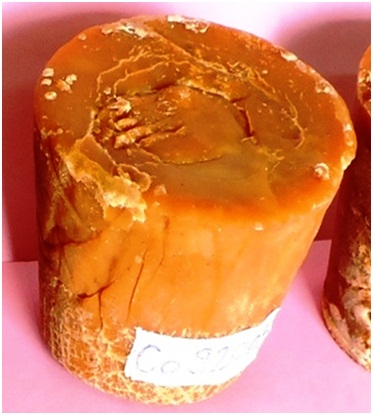
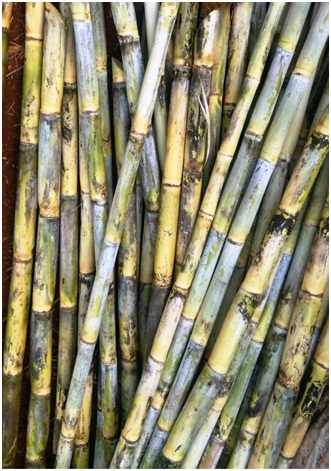

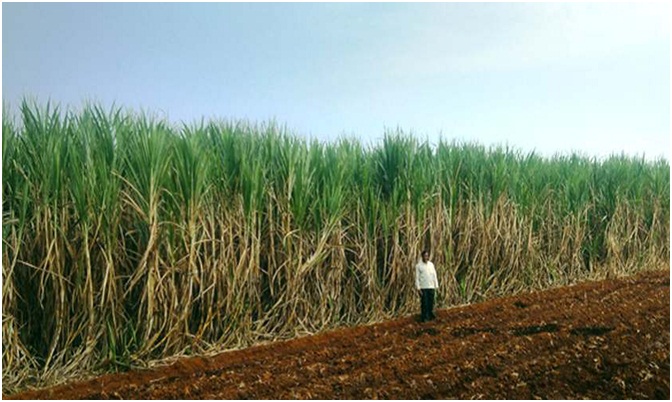
CoM 11082 (Phule 11082)
Early maturing sugarcane variety CoM 11082 (Phule 11082) is pre-released in Maharashtra for suru and preseason during 2018-19 and also identified for peninsular zone.
| Parentage | Co 86002 G.C. |
| Planting season | Suru (15 January to 15 February) and preseason (15 Oct. to 15 Nov.) |
| Cane yield | Suru season- 98.91 t/ha, Preseason season - : 118.34 t/ha |
| CCS yield | Suru season- 12.85 t/ha, Preseason season - : 17.19 t/ha |
| Sucrose % | Suru season- 18.60 %, Preseason season - : 19.94 % |
| Maturity | Early ( 10-12 months) |
| Salient features | CoM 11082 is a high cane and sugar yielding early maturing variety. It is moderately resistant to red rot, have better ratoonability and no leaf sheath spines. It may be a good substitute for CoC 671. It is suitable for suru and preseason season in Maharashtra. CoM 11082 recorded 15.40 per cent higher cane yield and 13.52 per cent higher CCS yield over the standard CoC 671 in suru season. |
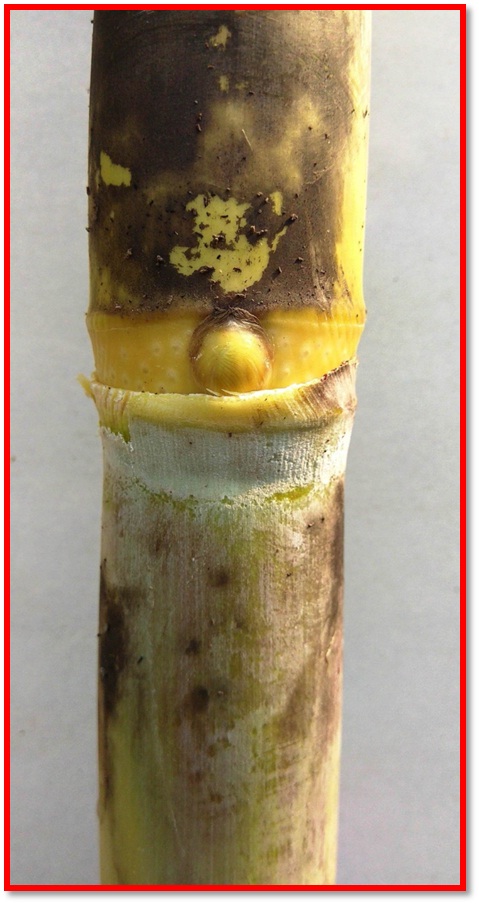
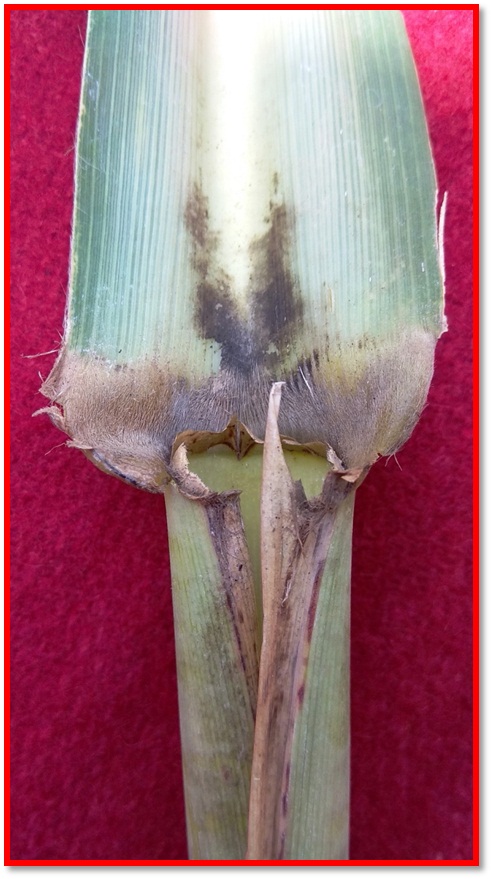
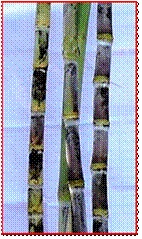

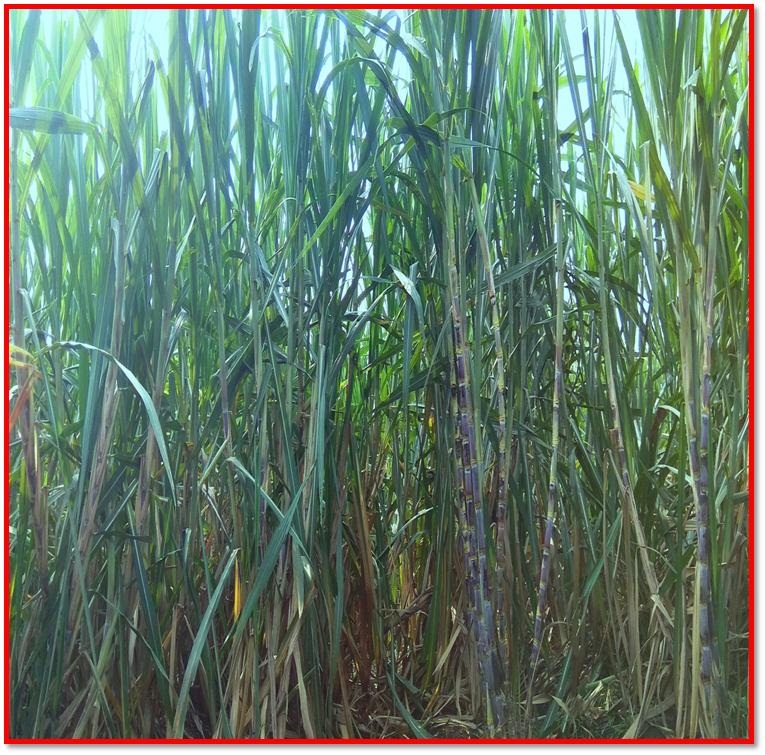
Impact of varieties in Maharashtra
The sugarcane variety Co-86032 was released in the year 1995-96. The area under sugarcane variety Co-86032 for the year 2016-17 was 339414.6 ha i.e. 53.62 % of total sugarcane area in Maharashtra. So, the total economic impact to the farming community in Maharashtra state was 905.09 cores for the year 2016-17.
The economic impact of sugarcane variety viz., Co-86032 for 22 years (from 1995-96 to 2016-17) has been estimated and presented in Table-1. The gross and net gain from university released varieties over check variety has been deflated on the basis of Consumer Price Index (CPI). It is noted from the table that the gross and net economic impact of Co-86032 variety of sugarcane to the farming community in Maharashtra state for the 22 years was 100787.28 crores and 11059.40 crores.
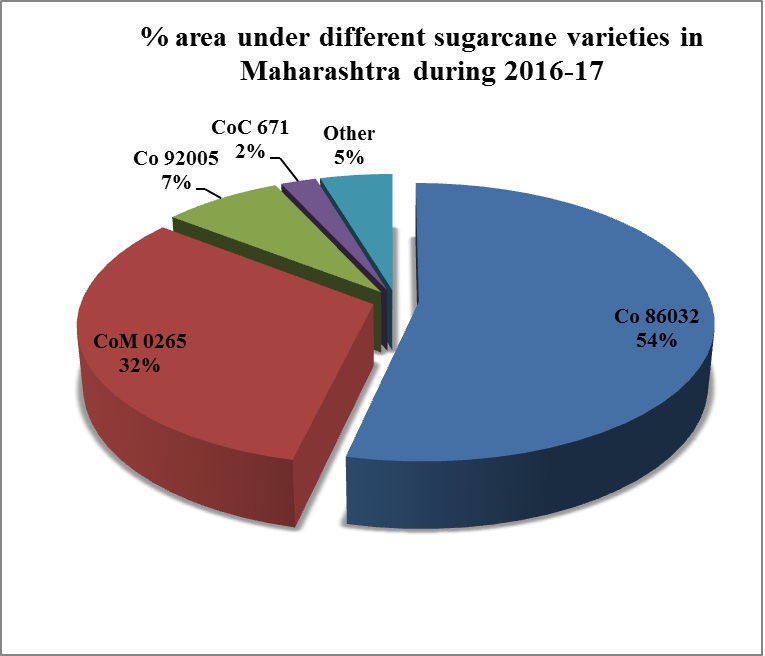
| Sr.No | Year | Gross Gain(Rs/Ha) | Net Gain (Rs/Ha) | Area(ha) | Net economic impact(in Lakhs) | Gross economic impact(in Lakhs) |
| 1 | 1995-96 | 51859.71 | 5690.57 | 1989 | 113.19 | 1031.48 |
| 2 | 1996-97 | 56976.17 | 6252.00 | 43344 | 2709.87 | 24695.75 |
| 3 | 1997-98 | 61429.83 | 6740.70 | 18124 | 1221.69 | 11133.54 |
| 4 | 1998-99 | 70739.10 | 7762.21 | 62487 | 4850.37 | 44202.74 |
| 5 | 1999-2000 | 74344.82 | 8157.87 | 102778 | 8384.49 | 76410.12 |
| 6 | 2000-01 | 77466.73 | 8500.44 | 210332.5 | 17879.18 | 162937.72 |
| 7 | 2001-02 | 80501.65 | 8833.46 | 208947 | 18457.24 | 168205.77 |
| 8 | 2002-03 | 84127.54 | 9231.33 | 247327.1 | 22831.57 | 208070.21 |
| 9 | 2003-04 | 87459.76 | 9596.97 | 254546 | 24428.71 | 222625.32 |
| 10 | 2004-05 | 90876.72 | 9971.92 | 150976 | 15055.20 | 137202.04 |
| 11 | 2005-06 | 94910.42 | 10414.53 | 211899 | 22068.29 | 201114.23 |
| 12 | 2006-07 | 101140.69 | 11098.18 | 393708 | 43694.43 | 398198.97 |
| 13 | 2007-08 | 108033.21 | 11854.50 | 589316.4 | 69860.50 | 636657.39 |
| 14 | 2008-09 | 117734.53 | 12919.03 | 406329 | 52493.75 | 478389.54 |
| 15 | 2009-10 | 132033.79 | 14488.09 | 450273.6 | 65236.02 | 594513.29 |
| 16 | 2010-11 | 150226.18 | 16484.34 | 547070 | 90180.87 | 821842.36 |
| 17 | 2011-12 | 164848.22 | 18088.82 | 583051 | 105467.02 | 961149.17 |
| 17 | 2012-13 | 181751.07 | 19943.57 | 445920 | 88932.36 | 810464.35 |
| 19 | 2013-14 | 204031.28 | 22388.38 | 509925.2 | 114163.99 | 1040406.35 |
| 20 | 2014-15 | 217935.57 | 23914.10 | 566746 | 135532.20 | 1235141.13 |
| 21 | 2015-16 | 230937.34 | 25340.79 | 441464.5 | 111870.57 | 1019506.39 |
| 22 | 2016-17 | 243015.20 | 26666.09 | 339414.6 | 90508.60 | 824829.06 |
| Total | 1105940.11 | 10078727.62 |
Economic impact of sugarcane variety CoM 0265 in Maharashtra
The gross and net gain from university released varieties over check variety has been deflated on the basis of Consumer Price Index (CPI). It is noted from the Table-2 that the gross and net economic impact of CoM 0265 variety of sugarcane to the farming community in Maharashtra state for 9 years was 31681.32 crores and 2215.03 crores respectively.
Table 2- Economic impact of CoM-0265 variety of sugarcane in Maharashtra
| Sr.No | Year | Gross Gain(Rs/Ha) | Net Gain (Rs/Ha) | Area(ha) | Net economic impact(in Lakhs) | Gross economic impact(in Lakhs) |
| 1 | 2008-09 | 106377.29 | 7437.48 | 4620 | 343.61 | 4914.63 |
| 2 | 2009-10 | 119297.18 | 8340.79 | 52164 | 4350.89 | 62230.18 |
| 3 | 2010-11 | 135734.65 | 9490.03 | 128790.4 | 12222.24 | 174813.19 |
| 4 | 2011-12 | 148946.17 | 10413.73 | 192033.8 | 19997.88 | 286027.00 |
| 5 | 2012-13 | 164218.49 | 11481.51 | 204960 | 23532.50 | 336582.22 |
| 6 | 2013-14 | 184349.45 | 12888.98 | 369637.8 | 47642.55 | 681425.27 |
| 7 | 2014-15 | 196912.42 | 13767.34 | 331797.5 | 45679.69 | 653350.65 |
| 8 | 2015-16 | 208660.03 | 14588.68 | 252003 | 36763.92 | 525829.54 |
| 9 | 2016-17 | 219572.80 | 15351.66 | 201737.1 | 30969.99 | 442959.79 |
| Total | 221503.27 | 3168132.51 |
Table : Variety wise per cent sugarcane area in Maharashtra ( 2007-2018)
| Year | Total area (Lakh ha) | Co 86032 | CoC 671 | Co 8014 | VSI 434 | CoM 0265 | CoVSI 9805 | Co 92005 | Other |
| 2007-08 | 10.93 | 56.34 | 28.02 | 1.28 | 0.25 | 0.0 | 0.0 | 0.0 | 14.11 |
| 2008-09 | 7.68 | 52.77 | 31.34 | 1.16 | 0.27 | 0.60 | 0.0 | 0.0 | 13.86 |
| 2009-10 | 7.56 | 59.56 | 24.21 | 0.47 | 0.19 | 6.90 | 0.10 | 0.0 | 8.57 |
| 2010-11 | 9.64 | 56.75 | 19.81 | 0.72 | 0.28 | 13.36 | 0.44 | 4.21 | 4.43 |
| 2011-12 | 10.22 | 57.05 | 16.44 | 0.08 | 0.25 | 18.79 | 0.54 | 4.09 | 2.76 |
| 2012-13 | 8.00 | 55.74 | 9.92 | 0.04 | 0.46 | 25.62 | 0.96 | 5.00 | 2.26 |
| 2013-14 | 10.54 | 48.38 | 6.81 | `0.03 | 0.24 | 35.07 | 1.04 | 5.69 | 2.74 |
| 2014-15 | 10.55 | 53.72 | 4.84 | 0.03 | 0.14 | 31.45 | 1.10 | 5.37 | 3.35 |
| 2015-16 | 8.35 | 52.87 | 4.70 | `0.03 | 0.46 | 30.18 | 0.88 | 6.26 | 4.62 |
| 2016-17 | 6.33 | 53.62 | 2.27 | 0.05 | 0.40 | 31.87 | 0.79 | 7.62 | 3.38 |
| 2017-18 | 9.22 | 52.64 | 2.12 | `0.03 | 0.29 | 32.41 | 0.65 | 6.92 | 4.94 |
Table-1. Information of sugarcane varieties released from Central Sugarcane Research Station, Padegaon in Maharashtra since 1932
| Variety | Parentage | Year of release | season | Cane yield (t/ha) | CCS yield (t/ha) | Maturity group | Salient features of the variety |
| Co 419 | POJ 2878 x Co 290 | 1936 | Suru | 122 | 14.80 | Early | High sugar, high yield, soft cane with pinkish colour, dark green leaves, best for rasvanti. Susceptible to GSD, smut, borers |
| Co 740 | (Co 421 x Co 440)x (Co 464 x Co 440) | 1956 | Suru Preseason Adsali | 106 123 155 | 12.6 17.0 20.4 | Late | Drought resistant, high tillering,sparse flowering, good sugar retaining capacity, good ratooner, susceptible to smut, mealy bugs and borers |
| Co 7219(Sanjivani) | Co 449 x Co 658 | 1982 | Preseason | 118 | 16.4 | Early | High sugar, high yield, thick cane, broad leaves with yellowish green colour, susceptible to smut and pith formation if harvesting is delay. Good ratooner. |
| CoM 7125 (Sampada) | Co 740 x Co 775 | 1982 | Suru | 110 | 14.3 | Midlate | Erect cane, nonlodging,broad leaves with yellowish green colour moderately resistant to smut,ESB, GSD and top borer |
| Co 7527 | Co 62175 x Co 658 | 1988 | Suru | 122 | 17.2 | Late | High yield, thick cane with green colour,sparse flowering best for water lodging condition. Recommended for Satara, Sangli and Kolhapur district only |
| CoM 88121 (CoM 7714)(Krishna) | Co 740 x Co 6806 | 1993 | Suru Preseason Adsali | 115 130 166 | 14.05 18.50 23.00 | Late | High yield, medium thick cane, sparse flowering good ratooner, moderately resistant to smut, high tillering, susceptible to leaf mosaic. |
| Co 8014 (Mahalaxmi) | Co 740 x Co 6304 | 1994 | Suru Preseason | 98 135 | 14.11 19.48 | Early | High sugar, thick cane, long tops hence tends to lodging, medium ratoon and excellent jaggery quality. Recommended for Satara, Sangli and Kolhapur district only |
| Co 86032 (Nira) | Co 62198 x CoC 671 | 1996 | Suru Preseason Adsali | 106 139 159 | 14.44 19.71 22.42 | Midlate | High sugar, high yield, easy detrashing, dark green leaves, good jaggery quality, moderately resistant to smut, good sugar retaining capacity, good ratooner, medium thick cane and cane becomes pinkish on exposer to sunlight cracks on internodes, soft cane susceptible to borer. |
| Co 94012 (Phule Savitri) | Somaclone of CoC 671 | 2004 | Suru Preseason | 128 139 | 19.74 20.07 | Early | High sugar, high yield, spines on cane, broad yellowish green leaves, moderately resistant to smut and red rot, moderately susceptible to wilt, good quality jaggery |
| Phule 265 | Co 87044 G.C. | 2007 | Suru Preseason Adsali | 150 164 200 | 20.31 22.57 26.82 | Midlate | High cane & CCS yield, good sugar retaining capacity in delayed harvesting, tolerant to salinity and water stress, better ratoonability, high tillering, resistant to smut, self de-trashing, leaf sheath spines & pithiness absent, erect dark green leaves. |
| Co 92005 | CoC 671 x CoT 8201 | 2009 | Suru | 128 | 18.29 | Early | Recommended for quality jaggery with higher jaggery yield and good keeping quality. High cane and CCS yield in kolhapur and Sangli districts of Maharashtra. Moderately susceptible to smut. Resistant red rot and wilt. Fetching higher jaggery price(Rs. 200 to 550 per quintal) than other varieties. |
| MS 10001 | CoM 0265 X MS 0602 | 2017 | Suru Preseason | 132.82 151.09 | 19.31 21.53 | Early | Early maturity 12 months, Salinity tolerant, Higher Cane and CCS yield,Better ratoonability,Thick cane (Diameter 3.30 cm),Leaf sheath spines are absent, No pith formation, Excellent tillering ability, Resistance to smut, red rot and wilt, LS to internode borer, top shoot borer and scale insect and MS to early shoot borer, Loose clasping and easy de- trashing |
| CoM 12085 (Phule 09057) | Co 94012 P.C. | 2019 | suru | 130.05 t/ha | 17.61 t/ha Jaggery yield | Midlate | Released for jiggery purpose, It gives special quality jiggery, Medium thick cane (3.16 cm), light green erect leaves, small bud size, bud groove present, leaf sheath spines are absent, sparse flowering and loose clasping. Resistant to smut, Moderately susceptible to red rot and Moderately resistant to wilt. It is resistant to foliar diseases (Rust, brown spot, Pokka boeing) under field conditions. Less susceptible to internode borer, top shoot borer and scale insect and Moderately susceptible to early shoot borer. |
Achievements
Crop Improvement
- Padegaon research station has made significant contribution by releasing 12 excellent sugarcane varieties for Maharashtra i.e. Co 419 (1936), Co 740 (1956), Co 7219 1982), CoM 7125 (1982), Co 7527 (1988), CoM 88121(1993), Co 8014 (1994), Co 86032 (1996), Co 94012 (2004), CoM 0265 (2007), Co 92005 (2009) and MS 10001(Prerelease, 2015).
- Co 86032 (Nira) released during 1996 is the dominant variety in Maharashtra for last two decades (more than 50 % area) widely adapted due to its good characters i.e. high cane and CCS yield, suitable for all season and all types of soil, sparse flowering, better ratoonability, resistant to smut, tolerant to drought and red rot.
- The popular high yielding, midlate maturing sugarcane variety CoM 0265 was released in 2007 for Maharashtra state. It is widely adapted due to its good characters i.e. tolerant to salinity, drought, high cane and CCS yield, suitable for all season and all types of soil, better ratoonability, resistant to smut and tolerant to red rot. It occupies more than 30% area under sugarcane in Maharashtra.
- The variety Co 92005, suitable for quality jaggery was released by Regional Sugarcane and Jaggery Research Station, Kolhapur in 2009.
- MS 10001(CoM 0265 X MS 0602) an early maturing sugarcane variety developed at CSRS Padegaon is preleased for suru and preseason planting in Maharashtra during 2015.
Crop production
- Pre-planting tillage operations with two ploughing + two harrowing was produced maximum cane yield and found more remunerative over other preparatory tillage operations. (2006-07).
- Under drought conditions, soaking of setts in saturated lime water + foliar spray of urea and KCl @ 2.5% at 90, 105 & 120 DAP + trash mulching after 60 DAP + application of FYM @ 10t/ha in furrows before planting and additional application of 60 Kg K2O/ha at last irrigation before earthing up to be adopted to improve cane yield.(2007-08).
- For sugarcane ratoon crop trash mulching between all rows with application of recommended dose of fertilizer by crow bar technique in two equal splits or Three hoeings, at 1, 4, and 7 weeks after ratoon initiation should be adopted for effective control of weeds in sugarcane ratoon crop. Further, trash mulching in alternate rows and hoeing in unmulched furrow at 1 & 6 weeks after ratoon initiation is also a good option.(2008-09).
- Application of Atrazine @ 2 kg ai/ha or metribuzine @ 1.25 kg ai/ha as pre- emergence followed by DICAMBA @ 350 g ai/ha at 75 DAP is effective for controlling binding weeds in sugarcane.(2008-09).
- Sub-soiling especially cross sub-soiling at 1.0 m is recommended for enhancing cane yield and sustaining soil health.(2010-11).
- The two-bud sett with 100% recommended seed rate gave significantly higher cane and CCS yield . However, cane yield of two eye bud sett with 75% recommended seed rate was on par.(2010-11).
- For sustaining higher sugarcane yield and better soil health, sugarcane plant and ratoon crops be fertilized with 75% of recommended NPK through inorganics + 25% of recommended N through organics (FYM/PSM) along with furrow application of Azotobacter + PSB @ 2.5 kg/ha each and biopesticide (Trichoderma) inoculated @1kg/ha mixed with one quintal FYM; apart from trash mulching and green manure of legumes (Soybean) in alternate rows in ratoon crop.(2010-11).
- Application of NPK + Zn + S+ Fe+ Mn to sugarcane recorded significantly higher yields of cane and commercial cane sugar and it is comparable with application of fertilizers based on soil test.(2013-14).
- Planting geometry with row spacing of 120 cm recorded the highest cane and CCS yield. However, it was at par with the row spacing of 150 cm for mechanization in sugarcane.(2013-14)
- The Priming cane node with cattle dung plus cattle urine and water in 1:2:5 ratio for 15 minutes found better for sugarcane productivity.(2014-15).
Crop protection
Entomology
- Soil application of chlorantraniliprole 0.4 G @ 22.5 kg/ha at the time of planting and/or 60 DAP OR spraying of chlorantraniliprole 18.5 SC @ 375 ml/ha at 30 and/or 60 DAP found effective for the management of sugarcane early shoot borer.
- Installation of sex pheromone traps @ 27/ha coinciding with the emergence of moths is recommended for the management of early shoot borer, top borer, internode borer and stalk borer (Specific septa should be used as per occurrence of different species of moths).
- The new pest (scale, Aclerda sp. nr. takahashii ) belongs to family Aclerdidae and the new predator Ankylopteryx sp. (Neuroptera : Chrysopidae) ( recorded on sugarcane at Central Sugarcane Research Station, Padegaon, which was identified from, “ National Bureau of Agricultural Important Insect, Bangalore.”
- The genotypes i.e. CoM 11011, CoM 11019, CoM 11020, CoM 11021, CoM 11022, CoM 11023, CoM 11024, CoM 11025, CoM 11026 and CoM 11028 showed resistance to sugarcane woolly aphid, Ceratovacuna lanigera Zehntner.
Pathology
- Two sprays of Propineb (0.2%) or Mancozeb (0.3%) 75 WP at 15 days interval after disease appearance are recommended for effective and economical control of sugarcane rust. (2014)
- The smut resistant genotypes, CoM 7601 and MS 7604 developed by this centre has been registered in NBPGR, New Delhi with registration numbers INGR16008 and INGR16009 respectively.



